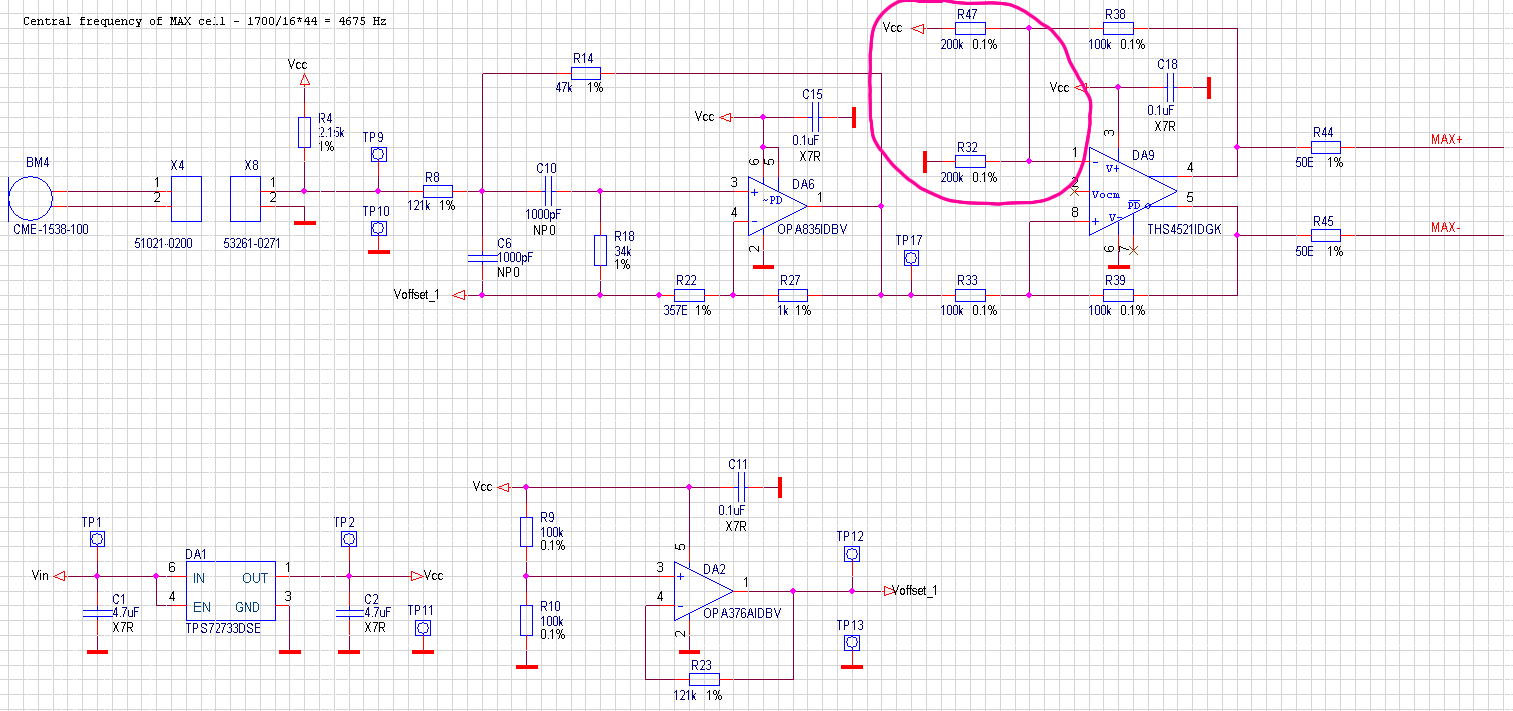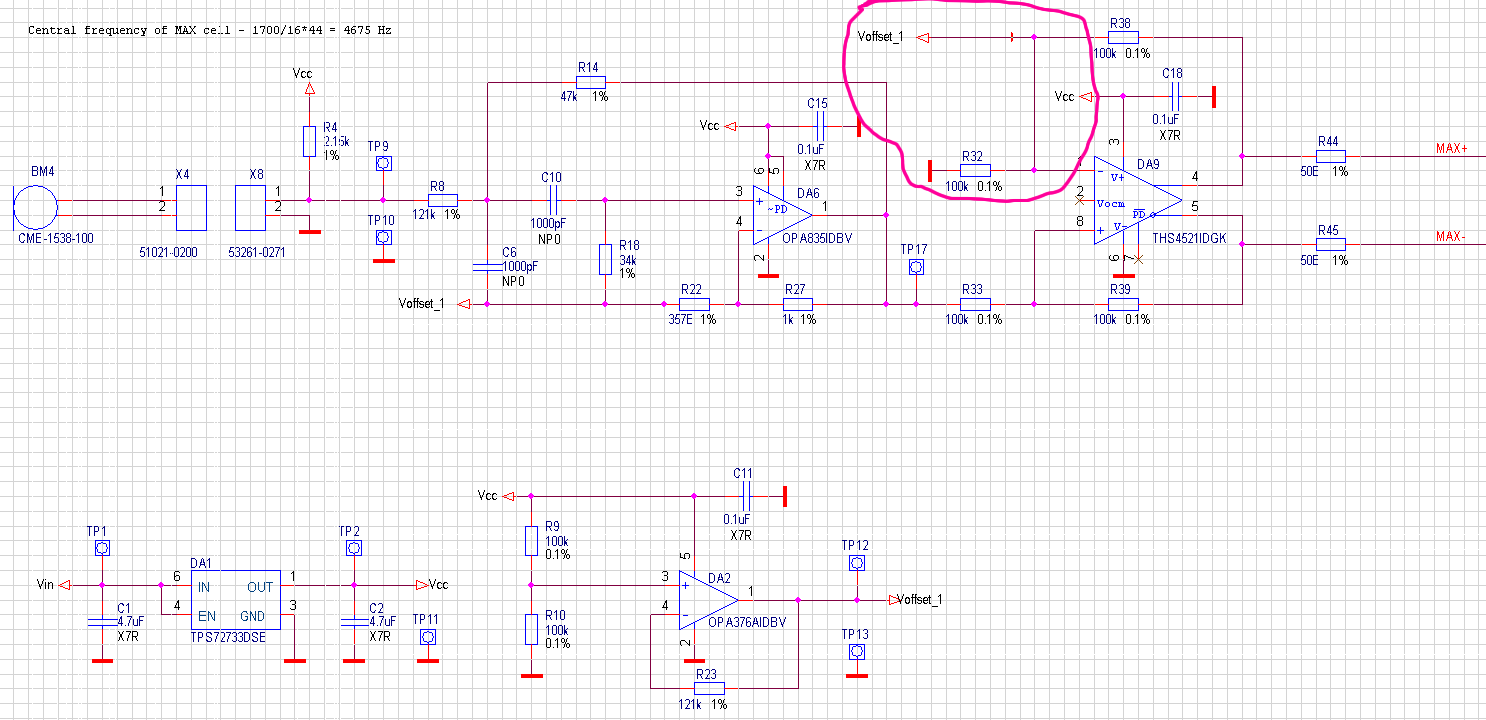Dear Sirs!
I'm trying to design bandpass filter, using FilterPro soft.
Filter params: fo:4700Hz, BW:1kHz, gain=5, Q=4.7, one stage (2nd order), LinearPhase_05, SallenKey topology.
So, FilterPro gives me a requirement for min GBW of opamp as 11,045 MHz. Why GBW must be so big? Frequency is in audio area... it seems to me, that 11MHz is too great, am I not right? What is the equation for min GBW calculation?
Thanks a lot in advance.



